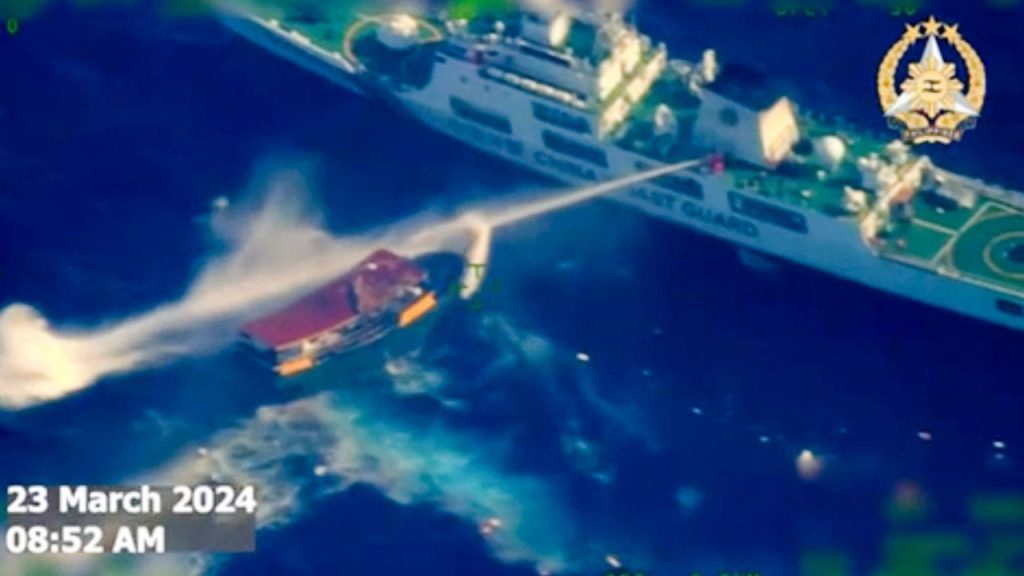The Philippines has lodged a strong protest against China after a water cannon assault by the Chinese coast guard on a Filipino navy boat in the disputed South China Sea. The incident resulted in injuries to Filipino crew members and significant damage to their vessel. This latest confrontation near the disputed Second Thomas Shoal has escalated tensions between the two countries, with fears of a larger conflict arising. The United States, as the oldest treaty ally of the Philippines in Asia, has warned that it is obligated to defend the country in the event of an armed attack.
Several countries, including the United States, the European Union, Japan, Australia, and others, have expressed support for the Philippines and the rule of law in the region. Despite this, China has accused Philippine vessels of intruding into its waters and has reiterated its commitment to safeguarding its territorial sovereignty and maritime rights. The Chinese Embassy in Manila warned against provoking further conflict, stating that China will take decisive measures in response to perceived threats.
In response to the aggressive actions by China, the Philippines lodged a protest and demanded that Chinese ships leave the waters around Second Thomas Shoal. Philippine defense, security, and foreign affairs officials held a meeting to discuss new steps to address China’s actions in the South China Sea. The ongoing standoff at Second Thomas Shoal, where Philippine forces have been stationed since 1999, has raised concerns about the potential for further escalation and conflict in the region.
The United States has conducted freedom of navigation operations in the South China Sea to challenge China’s expansive claims in the area. While the U.S. does not claim the territory, it has deployed Navy ships and fighter jets to demonstrate its commitment to ensuring freedom of navigation in the region. China, on the other hand, views these actions as attempts to contain its influence and destabilize the region, particularly with the strengthening of U.S. alliances in Asia.
In addition to China and the Philippines, several other countries including Vietnam, Malaysia, Taiwan, and Brunei have overlapping claims in the South China Sea. Despite a 2016 international arbitration ruling invalidating China’s claims, Beijing has refused to acknowledge it. The resource-rich and strategically important waterway continues to be a point of contention and flashpoint for regional tensions, with the risk of further confrontations between claimant states.
The ongoing disputes in the South China Sea highlight the complex geopolitical dynamics in the region, with competing territorial claims, military posturing, and potential for conflict. The Philippines’ protest against China’s actions underscores the challenges faced by smaller countries in asserting their rights against a powerful neighbor. As tensions persist, diplomatic efforts and international support will be crucial in de-escalating the situation and finding a peaceful resolution to the disputes in the South China Sea.


